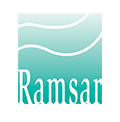We embroider on organza
We embroider on organza
Monday, June 28, 2021
Yesterday I was embroidery digitizing services a basket for an Easter egg on organza, and while I was making a file for it, I wondered if there are any programming peculiarities for this material or if everything can be done as you do for simple woven, problem-free materials, such as calico or jeans. I made a file for the basket using the most common technique, both in terms of density values and the number of frames. And I did not notice any special defects during embroidery, except for the excellent spreading of the fibers of this fabric. And today I climbed to see what recommendations for creating a machine embroidery design exist for this fabric. As usual in the subject of machine embroidery, information on embroidery on organza with a gulkin's nose. At the same time, a lot is embroidered on organza - all and sundry. This is an excellent interior fabric. Organza is a translucent plain weave fabric. It can be made of silk, polyester, nylon, and it can also be mixed - it all depends on the manufacturer. Namely, a similar composition of fibers, this fabric (they are strong, dense) requires, according to Deborah Jones and other meters of machine embroidery, careful selection of needles, a lightweight design, a relaxed upper thread tension and an invisible stabilizer. Absolutely all the recommendations that I found state that the design for organza should be as lightweight as possible, and not only in terms of density, but all frame stitches should also be removed in it, except for jogging. Well, with wireframe stitches, it is clear why they need to be removed - they will be visible through the light finishing layer and will look ugly. That is, the embroidery should be very light and translucent, and all “heavy” techniques should be replaced with “light” ones - sequins, rhinestones, openwork motifs, various appliqués, simple stitches, low-density satins with and without splits. Apparently, this is necessary in order not to disturb the drapeability of the fabric, to reduce the contraction, and simply for reasons of economy. But, as it turned out, there are many examples of products and embroidered fabrics with the usual opaque and even multicolor embroidery on organza. So, it's all about testing the developed design to check its suitability, and you should not be afraid to experiment with this fabric. [b]General guidelines for light machine embroidery on organza are:[/b] • Needle number, the finer the better (# 65-75). The tip type is sharp (K, R SPI). It must be selected depending on the type of organza. • The stitching should be very careful so as not to distort the fractional-transverse fabric and not to make such puffs as in the photo below: Such marks can be the result of over tightening the hoop (tightening the screw too tight) or pulling up an already heaped organza to improve the tension. You can also add extra fabric between the hoop and fabric so that no marks are left and the fabric does not slip out of the hoop rings during embroidery. You can read more about this here. • Stabilizer - water-soluble film or non-woven material. You need to hoop it along with the organza, if it is embroidered in one layer. And if there are several owls, then you can embroider without any stabilizers. • Reduce the tension of the upper thread to such a value that on the wrong side, a ratio of approximately top / bottom / top 2/5 + 1/5 + 2/5 is obtained. • The thread is viscose or cotton, as the softest. • Density values should start anywhere from 0.6-0.7mm. But you have to test. I put a value of 0.44mm on the basket and nothing. But my basket keeps its shape due to the number of stitches. • Stitch lengths should not be long - no more than 5mm. • Remove frame stitches, even those that form the edge (edge run). All this, of course, must be tested, trying on each specific design and selecting individual parameters for it.


